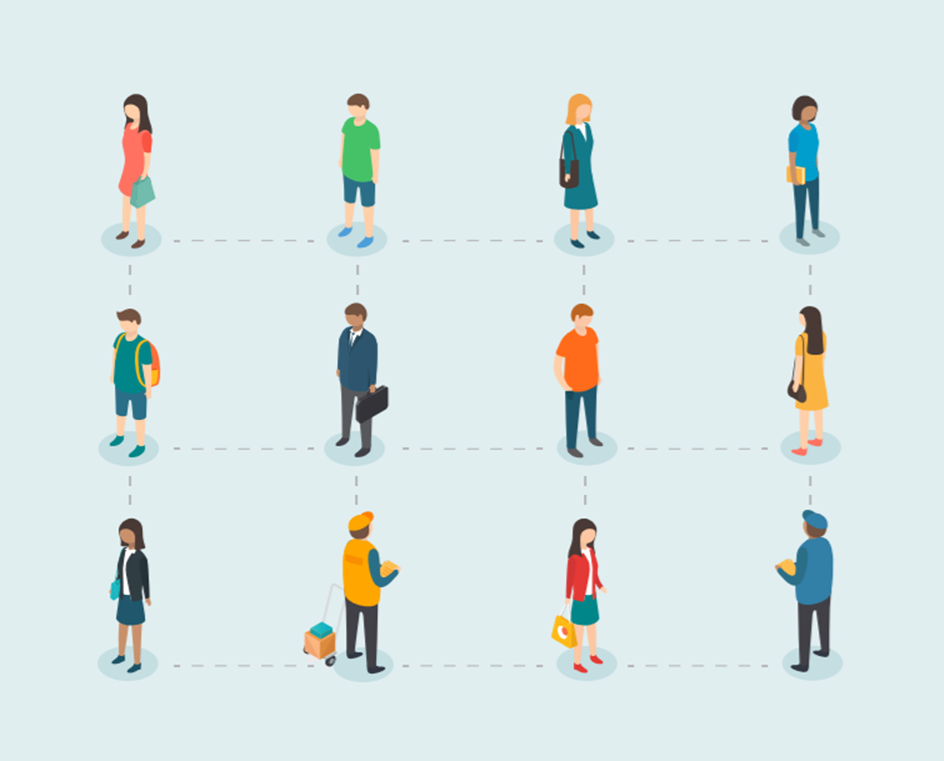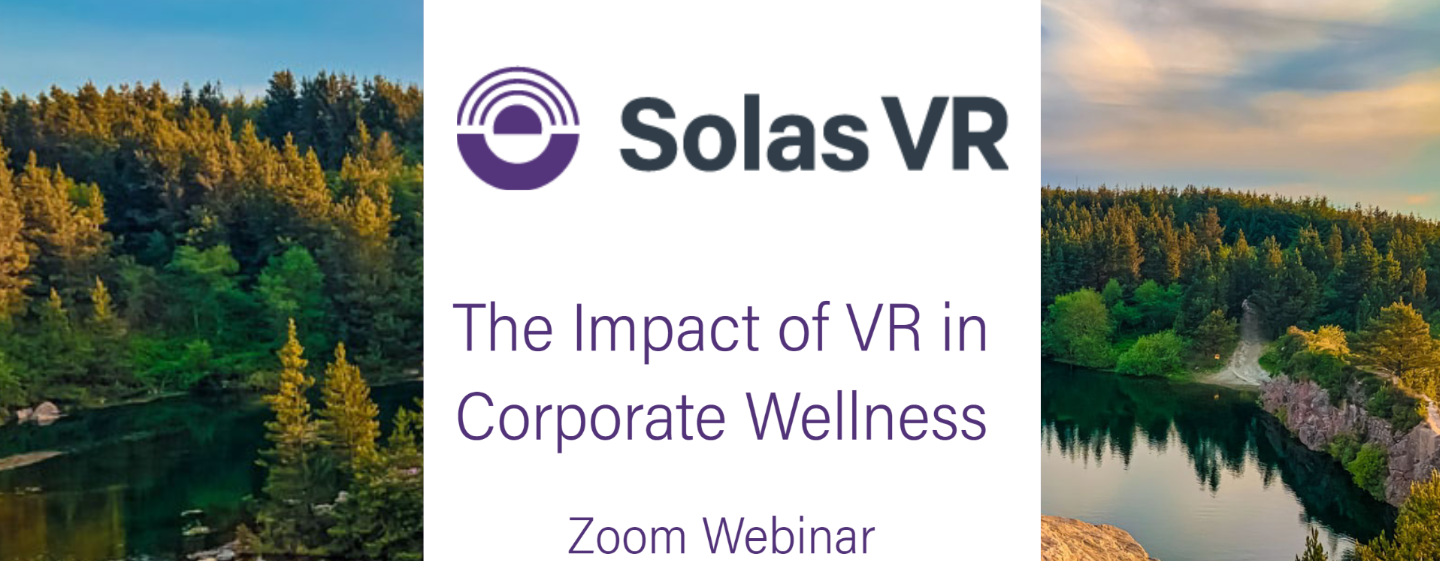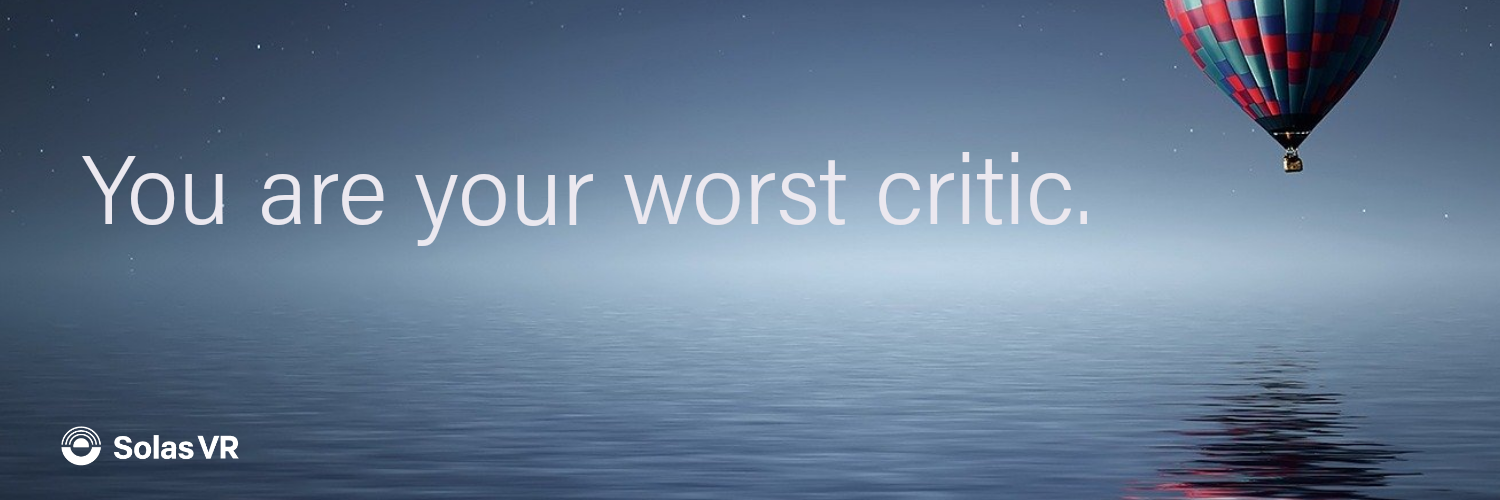
An Employer’s Guide for Managing Workforce Mental Health in the Next Stage of the Pandemic by lyrahealth.com
More cars clogging metropolitan-area roadways during commute hours, accelerated plans to welcome employees back to offices, and a federal push to reopen schools are all signs of an imminent return to the workplace for many workers. A year into the coronavirus pandemic, growing numbers of people worldwide are getting vaccinated against COVID-19, paving the way for more offices and worksites to reopen their doors. Whether employees return to their workplaces full-time, on a hybrid schedule, or not at all will depend on an array of factors, and planning for reopening during a still-unfolding pandemic is new and uncertain territory for employers and employees alike. Amid all of the upheaval brought by this pandemic over the past year, one thing has become clear: The mental health effects of this crisis are significant, and they won’t disappear upon returning to the workplace.
As a result, businesses must prioritize workforce mental health as they prepare to bring employees back to their shared workplaces. Employers looking to shore up workers’ mental health and well-being–and therefore their ability to be productive, let alone thrive–have a vital role in ensuring access to care and support during this still- uncertain time. The good news? There are highly effective, evidence-based treatments that are helping people manage and overcome their mental health struggles, even amid COVID-19, and technologies that facilitate virtual care, which can be vital for those who continue to stay home. Offering access to these resources, as well as communicating regularly with your workforce about the support available to them, can make all the difference for workers in distress. As you prepare for employees’ return to the workplace, the following guidance and insights from Lyra clinicians and human resources leaders can help you better respond to workers’ needs during this transition and position you to emerge from this crisis with a healthier, more resilient workforce.
“It’s causing a number of employers to really rethink, as we manage the immediate impact of COVID-19, how do we support employees as they return to work, and the longer impact on mental health is going to be a huge and unfortunately ongoing theme in the future.”
— Jeff Brodsky, CHRO, Morgan Stanley
Set the right tone from the start
Offer empathy and gratitude
Approach return-to-work discussions with a positive tone that conveys compassion as well as thoughtful leadership. To show that you understand the mix of emotions employees are likely feeling, it’s important to acknowledge the types of personal and professional challenges people are facing and communicate the efforts you’ll make to allow for flexibility during the return-to-work process.
Reinforce this message by letting your team know how much their work is appreciated and valued, while highlighting the shared mission that unites each member of the team. In stressful times, employees need to be reminded that their work is valued and serves a bigger purpose. Over time, you can bolster this message by freely acknowledging and praising employees for excellent work or for meeting goals under difficult circumstances.
Communicate next steps and rationale, early and often
Credible information is a powerful antidote to anxiety. Consistent communication from your company’s managers, leadership, and human resources team can reduce some of the uncertainty employees may feel during this stressful time. Without concrete information, our minds naturally fill the gaps–often with imagined scenarios that exacerbate anxiety. Even while plans are in development, share regular updates to your workforce across multiple channels (this might include emails, newsletters, talking points for managers, allhands meetings, and videos from leadership) to ensure that messages are highly visible and reinforced.
In your communications, be sure to:
- Provide clear rationale for business decisions about the return-to-work timeline, policies, and safety protocols. Employees are more likely to accept policy decisions when they understand the underlying process and considerations behind the decisions. Be sure to include any references and sources that helped inform your decisions.
- Offer reassurance from corporate leaders regarding the steps the company is taking to ensure everyone’s health and safety. Be empathetic and considerate in your tone. Signal that the company understands the high stakes involved and is proactively prioritizing employee health.
- Include specific guidelines on social distancing in the workplace and necessary preventative measures to reduce health risks, such as mask-wearing. Concrete guidance for employees on how they can mitigate the risk of illness at work can boost their sense of control in the situation, which helps reduce worry and anxiety.
Also, if your business has had to make difficult financial decisions affecting your workforce, such as laying off or furloughing employees, be as transparent as possible in communicating the rationale and reality behind these decisions. Use this as an opportunity to tell unaffected employees how much you value them.

Take the pulse of your employees
Your return-to-work plan for your workforce will be more successful and well formed if you can first understand employees’ immediate needs and concerns. Consider launching a pulse survey to capture feedback and give people an opportunity to voice their worries. These types of surveys can go a long way toward making your workforce feel heard, especially when they may be feeling disconnected. After collecting feedback, remember to share a summary of the results and information about how the company will address major themes reported in the survey.
Consider these questions as a starting point for soliciting feedback from your workforce.
For employees:
• How do you feel, personally, about returning to the office, on a scale from 1 (not eager) to 10 (very eager)?
• How would you feel, personally, about returning to the office, after getting the coronavirus vaccine, on a scale from 1 (not comfortable) to 10 (very comfortable)
• What actions would you like to see us take before you’re comfortable returning to the office?
• Are there conditions that are unique to you that we should be aware of, regarding returning to the office?
• How effective do you feel you have been at working remotely, on a scale from 1 (not very) to 10 (very)?
• If given the option, how would you feel, personally, about continuing to work from home, on a scale from 1 (not eager) to 10 (very eager)?
• Concerning equipment, support, and conditions, how well prepared are you to work from home?
• What are your top concerns if returning to the workplace?
• What are your top concerns if continuing to work from home?
For managers:
• How has working from home impacted your team’s effectiveness, on a scale from 1 (not at all) to 10 (very much)?
• What are your top concerns for your team if they return to the workplace?
• What are your top concerns for your team if they continue to work from home?
Offer benefits that can ease the return-to-work transition
For companies that don’t already offer a dedicated mental health benefit, or benefits tailored to working parents, family caregivers, and commuters, there’s never been a better time to start. With all of the stressors your employees are experiencing right now, providing supportive benefits can make a big difference in their ability to return to the workplace.
In addition to common benefit programs such as paid time off, child care, and commuter benefits, considering flexible work arrangements is more crucial than ever to help workers who are still dealing with the uncertainty of pandemic times. Meanwhile, research shows that more than half of employees— 55 percent in a recent survey by consulting firm PwC and 61 percent in an IBM survey—would prefer to work remotely most of the time, even post-pandemic.
Consider providing dedicated mental health supportIf your company is seeking ways to boost employee mental health, you’re not alone–73 percent of employers in our latest survey said their organizations planned to invest in this area in 2021. Plans to expand employee mental health support appear to be a response not only to the significant mental health impacts of the pandemic, but to employers’ growing recognition that health insurance and traditional employee assistance programs (EAPs) are insufficient to address the behavioral health needs of today’s workforce.
Supporting employees not only through the transition back to the office but on an ongoing basis may mean partnering with a dedicated mental health vendor that offers easily accessible, comprehensive care.
“For many, the transition to shelter-in-place has been isolating, but we can’t underestimate the additional strain of readjusting to going back to work. A crisis of this magnitude has far-reaching implications on our collective mental health, and the impact of economic recession on depression, anxiety, and substance abuse has been well established. It’s important that companies consider programs with demonstrated benefits
in addressing these areas, which have long been stigmatized. Thankfully, we’re seeing many companies prioritize behavioral health, and we’re happy to partner with companies that continue to push this space forward.”
– Dr. Sanjay Basu, Director of Research and Population Health at Collective Health
Remove practical barriers to returning to work
In addition to expanding mental health support and following safety protocols advised by OSHA related to creating a safe and healthy physical environment, consider these additional benefits to help employees ease into a new routine.• Child care and PTO benefits—Many working parents may still lack access to the child care support they relied on pre-pandemic. Consider offering child care benefits, flexible schedules, and more paid time off.
• Commuter benefits—Employees may depend on public transportation to commute to work and now feel uncomfortable with the potential risk. Consider offering a stipend to cover the cost of more private transportation, such as ridesharing.
• Return-to-work programs and disability insurance—For some, returning to work may be challenging if job modifications aren’t available and an employee needs to take extended leave. Disability insurance is another way companies can help alleviate increased financial stressors for employees.
Offer flexibility for vulnerable employees, parents, and caregivers
While there are specific roles and functions that may be required to return to a physical workplace, for many others, it may be less clear when it’s the right time to return. If you’re developing a phased approach, offer specific guidelines for these populations requiring special considerations.
Vulnerable populations:
Individuals who have certain chronic health conditions, are immunocompromised, or are 65 or older, or those who live with or care for people in these groups have a heightened risk of contracting the coronavirus and therefore may not be advised to return to work right away–especially if they haven’t been vaccinated. Consider additional precautions and flexible work schedules to accommodate these employees.
Parents and caregivers:
Working parents and caregivers may face additional challenges in managing returning to the workplace and caregiving responsibilities without their usual support systems. It may feel overwhelming to imagine how they can make this transition logistically, especially amid worries about their health and that of their loved ones.
Managers:
There may be circumstances when in-person meetings are more efficient and productive than virtual ones. Provide managers with specific guidance on the appropriateness of in-person meetings and how to conduct them safely, if necessary.
Encourage employees to take time off
After a year of cancelled vacations and in many cases, longer hours at work, many employees are in need of a break, even if pandemic travel restrictions remain. Encourage employees to schedule time off and consider formulating policies in advance around how paid time off (PTO) requests can be managed to minimize disruption. Some companies are also offering “COVID-19 leave days” as an additional benefit to support people with limited PTO. And for employers with a “use it or lose it” PTO policy, now is a good time to consider amending it to give workers who have accumulated lots of unused vacation days a chance to take PTO at their convenience.
For workers who may need extended leave, consult your disability insurance provider to ensure the coverage you are providing is appropriate for these unprecedented times. They can also offer guidance and programs that can help employees return to work sooner.
Offer support for coping with anxiety as COVID-19 restrictions lift
Coping with uncertainty means accepting that there is so much outside of our control. Even as we take swift and needed action societally to respond to the coronavirus pandemic, we can only do so much to control the behavior of those who still may not take the situation seriously. This is a scary reality, but it doesn’t help to deny it. In fact, research shows that simply acknowledging how difficult uncertainty is can make it easier to bear. Ultimately, though, that energy is best focused on the things you can control, including how you support employees who may be experiencing emotional distress at work.
Be on the lookout for mental health symptoms
Data show that the prevalence and severity of depression, anxiety, and substance use have surged since the spread of COVID-19 began in the United States. With the return to shared workspaces, managers will be better positioned to spot signs of emotional distress or behavioral problems that were less visible when working from home or if the employee was on leave.

Also important to note: Mental health symptoms that emerged or worsened while employees were working remotely will not suddenly resolve once they’re back in the office. (On the contrary, research suggests that the pandemic’s mental health impacts are likely to last for years). Review our guidance for how to identify signs of concern in the workplace and talk with employees about wellness and appropriate support resources.
Be proactive about checking in
In Lyra Health’s survey of more than 1,000 workers at the end of 2020, 42 percent said they would feel uncomfortable discussing their mental health with their manager. It’s critical that managers consider strategies that make employees more comfortable with speaking up if they’re facing challenges, in addition to responding to signs of concern.
• Individually: Check in casually with team members throughout the week about how they’re doing, how they’re managing their work, and what support you can offer. This demonstrates your care and concern, while providing opportunities for them to share unseen struggles.
• For team meetings: Consider designating the first five to 10 minutes for a “wellness check” by asking people to share how they are feeling and what they’re doing to support themselves. You can start with something like, “What’s something you’ve tried this week for self-care?”

Be a steady leader, even under stress
Returning to the workplace means a period of readjustment for everyone involved, even in less exceptional circumstances. Meanwhile, as you support your team members with this transition, chances are, you’re dealing with your own stress behind the scenes. People leaders are not immune to the cumulative effects of the pandemic that can erode patience and intensify emotions. But managers can help ease the impact of those emotions on their management style by using the following four strategies.
1. Check the stress levels. Instead of focusing on managing conflict, first try to lower the risk of it occurring unnecessarily. Before meetings with your team, try to assess three things:
• Your own stress level
• The stress levels of others involved
• The level of stress you expect the situation to provoke
If the stress level in two or more of those areas is high, consider the pros and cons of rescheduling until cooler heads prevail, or changing the scope or amount of content discussed in that moment. You don’t want to avoid difficult conversations altogether, but it’s better to engage when you’re emotionally equipped to handle the situation and you have a plan to help minimize the stress that could follow.
2. De-escalate your own emotions. When you tune into your own stress levels, try to notice what you’re feeling in that moment. The first step to de-escalating your own reaction is to acknowledge and label your emotion (for example, “I’m feeling anxious right now”). Then, think through some ways to feel calm or more positive in that moment. Options could include taking a walk for a change of scenery, a pleasant distraction such as reading something funny or inspirational, or a relaxation technique such as deep breathing. Whatever strategy you choose, the goal should be to shift your attention away from your stressors toward something more enjoyable to give yourself a momentary break.
3. Take an “empathy first” approach. Everyone views situations through their own unique lenses. Our perspectives are colored by our prior experiences, personality characteristics, cultural points of view, and even our mood. Disagreement, disappointment, or frustration with colleagues often occurs when we don’t try to see the situation through someone else’s eyes. When discussing difficult topics, or during tense moments, step back and try to empathize so you don’t take it personally when others are upset. You can practice empathy with your employees through the following steps:
• Focus on what you know about this person and the challenges they face. Think about their
circumstances and what resources they have to handle them. Consider that this person is likely trying to do their best.
• Ask open-ended questions to show that you’re curious and willing to learn more.
• Reflect back what they’ve shared by summarizing what you heard and asking if it’s accurate. This shows that you’re invested in understanding their point of view.
• If you get frustrated with the person, consider some alternative explanations for why they’re behaving in a way that bothers you. This can prevent you from taking the situation personally when it likely has more to do with factors unrelated to you.
4. Respond intentionally. When responding to someone during challenging moments, think beyond what will make you feel good in the moment and instead, think long-term. Remember, being right isn’t everything. Whenever possible, respond to an employee in a way that promotes preserving the relationship and encouraging their best work. This can include reminding the employee of your shared goals, letting them know what you can do to support them toward those goals, and clarifying their role in next steps after the conversation. You can increase your employee’s sense of professional effectiveness by reiterating their skills and strengths that will help them in those next steps. In especially tense situations, the best course may be pausing the conversation if it’s unproductive and revisiting it in the near future. Regardless of how upset you are, always avoid blaming, name-calling, or dismissiveness, which will undermine your authority and foster mistrust and resentment.
“People have a lot more on their minds related to their own safety and their family’s safety, so we’re just trying to encourage people to take the space they need when they’re feeling
impacted. Our goal isn’t just to send people home at the end of the day, it’s to send people home healthy.”
— Sheila Krueger, Head of Global Benefits, Zoom Video
Offer a decision-making framework in the face of uncertainty
Even if many of your employees continue working remotely for some time, many of their communities are reopening. As local and state officials issue updates to previous guidelines, it will take everyone time to interpret and apply the new rules to each person’s vaccination status, balancing personal risk tolerance, the need for human connection, and addressing their basic needs. A framework for making these decisions can help people ease their anxiety, cope with uncertainty, and manage their discomfort.
Help simplify tough decisions
These days, everyday routines now bear significant health implications, which can lead to decision fatigue– fast. Something as simple as ordering takeout from a restaurant now involves abstract tradeoffs of risk and reward. When faced with difficult decisions, our minds may become preoccupied with making the “right” choice. It’s helpful to simply recognize that there is no perfect way to make these decisions, and there will be risk involved regardless.
Given the pace of life and varied responsibilities we all balance, there’s not time to scrutinize every choice. Investing the time to proactively develop a personalized framework for making these decisions–and sharing it with loved ones–could help avoid a lot of stress and potential conflicts with others who may have a different perspective. Rather than treating each decision in isolation, you can rely on your framework for guidance, while being willing to update your thinking if the situation changes..
Let your values be a compass
Everyone’s overall risk tolerance varies. Each person will weigh tradeoffs differently according to their values and particular circumstances. For example, some will return to church as soon as possible because spirituality or community is deeply meaningful to them, whereas others who are passionate about nutrition or supporting local agriculture may venture out to get organic produce from the farmer’s market. Rooting our decisions in values, or the things that give our lives a sense of meaning or purpose, helps us prioritize what we care about most and cope with the discomfort we may encounter along the way.
Hold space for contradictory truths
Our minds prefer things to be black and white to make decisions easier and reduce cognitive dissonance. COVID-19 is a serious illness, and even with more vaccinations administered each day, the best way to avoid contracting it is to stay home and avoid physical contact with others. Yet, staying home indefinitely– particularly after a year of isolation–carries psychological, social, and economic consequences. Both these statements are true, and we don’t have to pick one or the other. Holding these truths together can help us make more thoughtful decisions and recognize that our discomfort in making them is a natural response to this difficult situation.
Remember that your decisions affect others too
This pandemic has shown how dependent we all are on one another. Our health depends on the choices of many individuals. It’s easy to focus on how our choices will impact us individually, such as weighing the probability of contracting the virus. Even for those who are fully vaccinated, it’s still essential to take measures to protect yourself and others, as experts are still learning how vaccines impact the spread of COVID-19. If you are in a position of influence—for example, as a parent, community leader, or manager—consider how others may look at your behavior as a model. It’s still imperative to recognize our interdependence as we collectively adapt to new and unfamiliar transitions in a pandemic.
“This past year was hard on people who were thrown into unusual work circumstances–taking meetings from quiet closets and having kids popping up on screen has become the new normal. We retooled our wellness benefit early on to allow people to expense things that would help support them at home. We’ve also been focused on talking more about mental health to reduce stigma and making sure people know what benefits exist that will help support them.”
— Kim Ramos, Director of Benefits, The Mosaic Company

Moving forward together
A year into this unprecedented global health crisis, we are all still doing our best to adapt during these extraordinary times. The mental health implications of the pandemic are real and can impact employees’ chances of making a successful return to work. However, by recognizing the unique challenges your employees face and taking action to address them, you can provide the support they need to thrive as they readjust to a new normal at work.
When your teams need more support
Make sure to work with and promote your EAP to connect employees to available mental health care services. If your company offers Lyra as a benefit, employees can register for care and find a provider that’s right for their needs today.
Find the whole guide here: LYRA-Return-to-Work-Guide-2021











